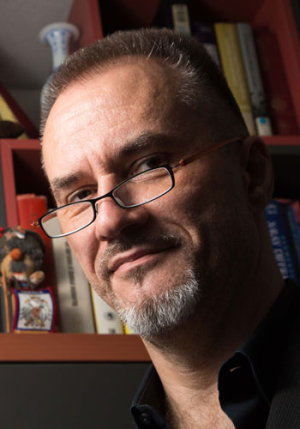National Semiconductor, the world’s largest maker of analog circuits, has given $160,000 to a Cullen College of Engineering professor to develop new metal alloys for possible use in devices that require top-notch reliability.
The grant to Stanko Brankovic, an assistant professor of electrical and computer engineering, will be used to support two graduate students and to design and build an entirely new machine for testing the properties of these alloys.
The alloys Brankovic will create will be comprised primarily of cobalt, iron and nickel. Such alloys are typically easy to mass-produce and have a good ability to withstand physical stress. Most importantly, they are good conductors of magnetic fields. Magnetism is at the heart of mechanical switches used in many applications that require 100% reliability, such as medical devices and satellites. These alloys, therefore, could be extremely useful in these critical situations.
Such alloys, though, too easily conduct the electricity created by magnetic fields. As a result, when the electrical current gets too high, the alloys themselves are damaged, leading to device failure.
Brankovic, then, will introduce an additional element, such as titanium or boron, into these alloys in very small amounts (less than one percent of the total). In doing so, he will attempt to walk a fine line.
“Let’s say you design a material that has magnetic properties you’re happy with,” said Brankovic. “The idea is to play the game, adding the minimum amount possible of the fourth element in order to significantly reduce the alloy’s conductivity without sacrificing its other properties.”
While adding a fourth element to these alloys has already been proven to increase their resistance to electrical current, how the addition impacts the alloy’s magnetic properties is not well known.
In order to reveal this information, Brankovic and his research team will build a new machine that uses infrared sensors to test the properties of various alloys as they are created.
What’s more, by analyzing data from these tests, Brankovic will seek to reveal not only the properties of these alloys, but the fundamental mechanisms behind those properties. In short, this research will show why these alloys have certain characteristics and give scientists a blueprint for creating new materials in the future.
“We’re basically entering this field where things are unknown,” said Brankovic. “We want to quantify this effect, perhaps develop some analytical models. But we also want to do the practical research, which means we want to develop fully functional alloys that could be immediately applied in commercial devices.”
